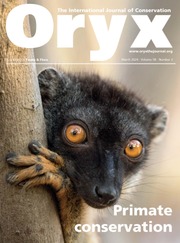Conservation breeding and head-starting programmes are widely implemented to bolster wild populations of threatened species. However, monitoring the survival of head-started individuals in the wild is often hampered by funding limitations, difficulties with obtaining necessary permits and fieldwork constraints. Despite these obstacles, assessing survival rates is essential for evaluating the success of such conservation initiatives.
The narrow-headed softshell turtle Chitra indica, one of India’s most enigmatic and elusive freshwater turtle species, is categorized as Endangered on the IUCN Red List. Native to the Indian subcontinent, this species has declined as a result of poaching and habitat change.
Chitra indica were hatched from eggs protected under a nest protection and head-starting programme initiated in 2012 by the India Turtle Conservation Program in collaboration with the Uttar Pradesh Forest Department. Despite husbandry challenges, 35 offspring were successfully raised at the Kukrail Gharial Rehabilitation Centre in Lucknow, Uttar Pradesh.
In late November 2024, with the support of the Turtle Survival Alliance Foundation India and the Uttar Pradesh Forest Department, we released 15 head-started subadult C. indica into the wild. To monitor post-release survival, we procured 10 VHF tags customized for softshell turtles, with the support of the Turtle Conservation Fund and Dutch–Belgian Turtle and Tortoise Society. The transmitters were attached to five male and five female turtles, which were subsequently released into the Yamuna River in the Agra district of Uttar Pradesh, on 28 November 2024.
The released turtles had an average weight of 6.8 kg (range 3.9–9.9 kg) and an average straight carapace length of 39.5 cm (range 24.3–44.9 cm). The weight of the VHF tags, including screws and fixing material, was 65 g.
This study is a critical step in our ongoing efforts to increase the wild population of C. indica. By monitoring and tracking the tagged individuals, we will gather vital data on habitat preferences, survival rates and dispersal patterns. These findings will help to evaluate the effectiveness of species recovery programmes, including nest protection, head-starting and the release of captive-raised individuals. The outcomes of this study will also inform adaptive management strategies for future conservation efforts. Ultimately, this work will support the long-term recovery and viability of C. indica populations across the species’ native range.

